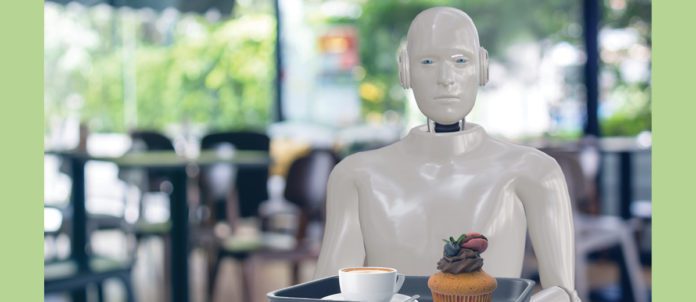The year 2029 is fast approaching, yet the threat of a Skynet-like super-computer ruling our dining experience still seems light years away — although there’s no denying the pandemic rocketed foodservice owners and operators into a new arena of seeking technological solutions to new challenges.
“COVID-19 has definitely accelerated the industry’s adoption of technology. Restaurants had to quickly pivot and implement new models in order to stay afloat,” says Chris Adams, vice-president of Strategy at Texas-based Oracle Food and Beverage. “Investing in technology that will grow with their brand over the next decade is no longer going to be a nice-to-have for restaurants, but rather a must have,” he says.
But what and where that technology is and does depends on your point of view. If it were up to customers, robots in restaurants won’t replace real people just yet. According to Oracle Food and Beverage’s Restaurant 2025 report, 49 per cent of operators thought positively of robots greeting guests, but 38 per cent of customers said they’d return less often to an establishment using robots to greet guests. In addition, 50 per cent of customers said they would find being served by a robot invasive and 40 per cent said they would visit less, citing concerns over robots replacing human interactions. But, according to experts, the adoption of robotics in foodservice is less likely to be so futuristic and obvious on the server side, while robots are already moving into the back of house to take over less visible and social tasks such as food safety, prep and cleaning.
“Despite some of the obvious objections to more robots in the industry, we can’t ignore that they can offer solutions to the challenges the pandemic has brought to the restaurant industry, including the increased demand for off-premise dining, insufficient staffing and food-safety concerns. The adoption of robots can help streamline kitchen operations, automate day-to-day operations and enable existing staff to promote a better guest experience”, says Adams.
Where robots are finding their place is in food processing. Soft Robotics Inc designs and builds automated picking systems using a soft robotic gripping system, 3D machine perception and artificial intelligence (AI). The company recently raised $10 million in series-B funding to meet demand created by COVID-19. “We’ve seen a significant amount of demand from the protein, produce and bakery industries throughout the pandemic,” says Austin Harvey, director of Product Development at U.S.-based Soft Robotics Inc.
“SoftAI layers 3D vision and artificial-intelligence technologies on top of Soft Robotics’ patented and proven, IP69K-rated, soft grasping to give industrial robots the hand-eye co-ordination of human workers. This unprecedented combination of “hands,” “eyes” and “brains” enables, for the first time ever, the automation of bulk-picking processes (e.g. bin picking) in the food supply chain. We see this as a game-changer in food processing”, explains Mark Chiappetta, CTO/COO of Soft Robotics Inc.
“The demand and adoption of automated food processing and foodservice is growing fast,” Chiappetta says. “Today the only two solutions for simulating bulk product are human workers or conventional (non-robotic) automation that takes up tremendous floor space and tends to be expensive, inflexible and difficult to maintain/sanitize. Technology that can enable industrial robots to do bulk picking of variable products from unstructured boxes, bins, or totes, such as SoftAI from Soft Robotics, would allow for less expensive, simpler, safer and more flexible automation solutions.”
And that’s exactly what today’s restaurateur is seeking to deal with the hurdles left behind in the wake of COVID-19 — safe, affordable, reliable solutions.
Written by Andrea Victory


















